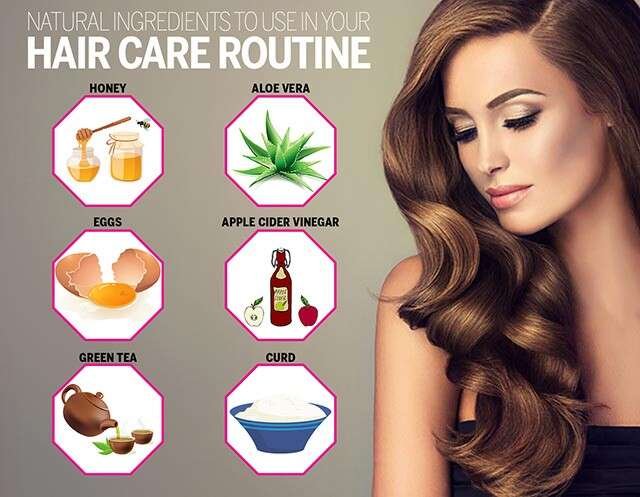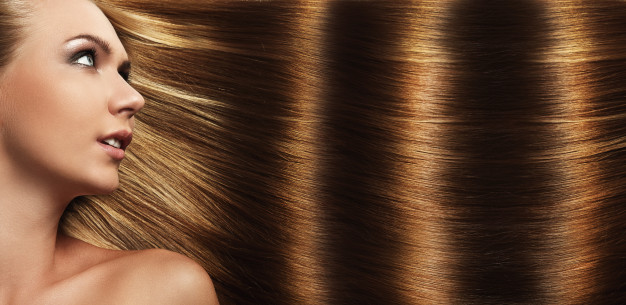How to Keep Your Hair Healthy and Strong Every Day
Maintaining luscious, healthy hair is a goal many strive for. At hairy.cartlab.web.id, we understand the dedication it takes to achieve this. Whether you’re dealing with dryness, breakage, or simply want to enhance your hair’s natural shine, a consistent and comprehensive hair care routine is key. This article will delve into the essential steps and practices to help you achieve your hair goals, transforming your locks from dull and lifeless to vibrant and strong. We’ll explore everything from proper washing techniques to the importance of nutrition and stress management, providing you with a holistic approach to how to keep your hair healthy and strong every day.
Your hair, like your skin, reflects your overall health and well-being. The journey to healthy hair is not a quick fix but a commitment to consistent, mindful practices. Understanding the underlying factors affecting hair health is crucial before implementing any changes to your routine. This detailed guide will equip you with the knowledge and tools necessary to nurture your hair’s natural beauty and resilience.
This comprehensive guide will address the most common hair concerns and provide actionable, evidence-based solutions to help you achieve and maintain healthy, strong, and beautiful hair. We’ll cover everything from diet and hydration to styling techniques and the importance of regular trims. Let’s embark on this journey together, unlocking the secrets to achieving your hair aspirations.

1. The Foundation: Nutrition and Hydration for Healthy Hair

The health of your hair begins from within. A balanced diet rich in essential nutrients is the cornerstone of strong, vibrant hair. Protein is crucial, as hair is primarily composed of a protein called keratin. Excellent sources include lean meats, fish, eggs, beans, and lentils. Iron deficiency can lead to hair loss, so incorporating iron-rich foods like spinach, lentils, and red meat into your diet is vital. Biotin, a B vitamin, is also essential for hair growth and can be found in eggs, nuts, and sweet potatoes. Furthermore, zinc plays a role in hair follicle function, and good sources include oysters, pumpkin seeds, and chickpeas.
Remember to stay hydrated! Water is essential for transporting nutrients to your hair follicles and keeping your scalp healthy. Aim for at least eight glasses of water a day. A deficiency in water can lead to dry, brittle hair, making it more prone to breakage.
2. Gentle Cleansing and Conditioning: The Art of Washing Your Hair

How you wash your hair significantly impacts its health. Avoid harsh sulfates and silicones found in many commercial shampoos, as these can strip your hair of its natural oils, leading to dryness and breakage. Opt for sulfate-free and silicone-free shampoos, ideally those formulated for your specific hair type (e.g., fine, thick, oily, dry).
When washing, focus on cleansing your scalp thoroughly, gently massaging the shampoo into your scalp to stimulate blood flow and remove buildup. Avoid scrubbing vigorously, which can damage your hair. Rinse thoroughly with lukewarm water, as hot water can strip your hair of its natural oils.
Conditioning is equally important. A good conditioner helps to replenish moisture, detangle your hair, and add shine. Apply conditioner from the mid-lengths to the ends of your hair, avoiding the scalp. Leave it on for a few minutes before rinsing thoroughly. Consider using a deep conditioner once or twice a week for extra hydration, especially if you have dry or damaged hair.
3. Styling with Care: Minimizing Heat and Damage

Heat styling tools like straighteners and curling irons can cause significant damage to your hair if used excessively. Whenever possible, allow your hair to air dry naturally. If you must use heat styling tools, always apply a heat protectant spray beforehand to minimize damage. Choose tools with adjustable temperature settings and use the lowest effective heat setting.
Avoid tight hairstyles that pull on your hair, such as tight ponytails or braids, as these can lead to breakage and hair loss. If you frequently style your hair in tight updos, consider using gentler alternatives, like loose braids or low ponytails. For those with short hair looking for volume, check out our article on “Tips to Style Short Hair for Volume” [hairy.cartlab.web.id/tips-to-style-short-hair-for-volume].
4. Protecting Your Hair from Environmental Damage

Environmental factors like sun exposure, wind, and pollution can significantly impact the health of your hair. Sun exposure can dry out and damage your hair, leading to breakage and color fading. Always protect your hair from the sun by wearing a hat or using a UV protectant spray, especially during prolonged sun exposure.
Wind can also cause dryness and breakage, so consider using a leave-in conditioner or hair oil to protect your hair from the elements. Pollution can build up on your hair, leading to dullness and dryness. Regular washing is essential to remove pollutants and keep your hair looking its best.
5. Regular Trims and Professional Hair Care

Regular trims are essential for maintaining healthy hair. Trimming your split ends prevents them from traveling up the hair shaft, causing further breakage and damage. Aim for a trim every 6-8 weeks to keep your hair looking its best.
Consider consulting a professional hairstylist for advice on the best hair care products and styling techniques for your hair type. A stylist can also assess the health of your hair and recommend treatments to address any specific concerns. They can also help you avoid common hair care mistakes; check out our article on “7 Common Hair Care Mistakes to Avoid” [hairy.cartlab.web.id/7-common-hair-care-mistakes-to-avoid] to learn more.
6. Stress Management and Sleep: The Holistic Approach

Stress and lack of sleep can significantly impact your hair health. Chronic stress can disrupt the hair growth cycle, leading to hair loss. Prioritize stress management techniques such as exercise, yoga, meditation, or spending time in nature. Aim for 7-8 hours of quality sleep each night, as this is when your body repairs and regenerates itself, including your hair.
For those interested in creative hair styling, you might enjoy our article on “12 Ways to Style Galaxy Hair” [hairy.cartlab.web.id/12-ways-to-style-galaxy-hair]. Remember, healthy hair starts with a holistic approach that considers both internal and external factors.
Conclusion:
Achieving and maintaining healthy, strong hair is a journey that requires dedication and consistency. By following the tips outlined in this guide, focusing on nutrition, gentle cleansing, protective styling, and stress management, you can significantly improve the health and appearance of your hair. Remember that patience and consistency are key. Start incorporating these practices into your daily routine and witness the transformation of your hair from dull and lifeless to vibrant and strong. For more information and resources on how to keep your hair healthy and strong every day, visit How to Keep Your Hair Healthy and Strong Every Day. Remember, healthy hair is a reflection of your overall well-being! And don’t forget to consult a dermatologist or trichologist if you experience significant hair loss or other concerning hair issues. [External link 1: American Academy of Dermatology] [External link 2: Mayo Clinic] [External link 3: National Institutes of Health]






Comments